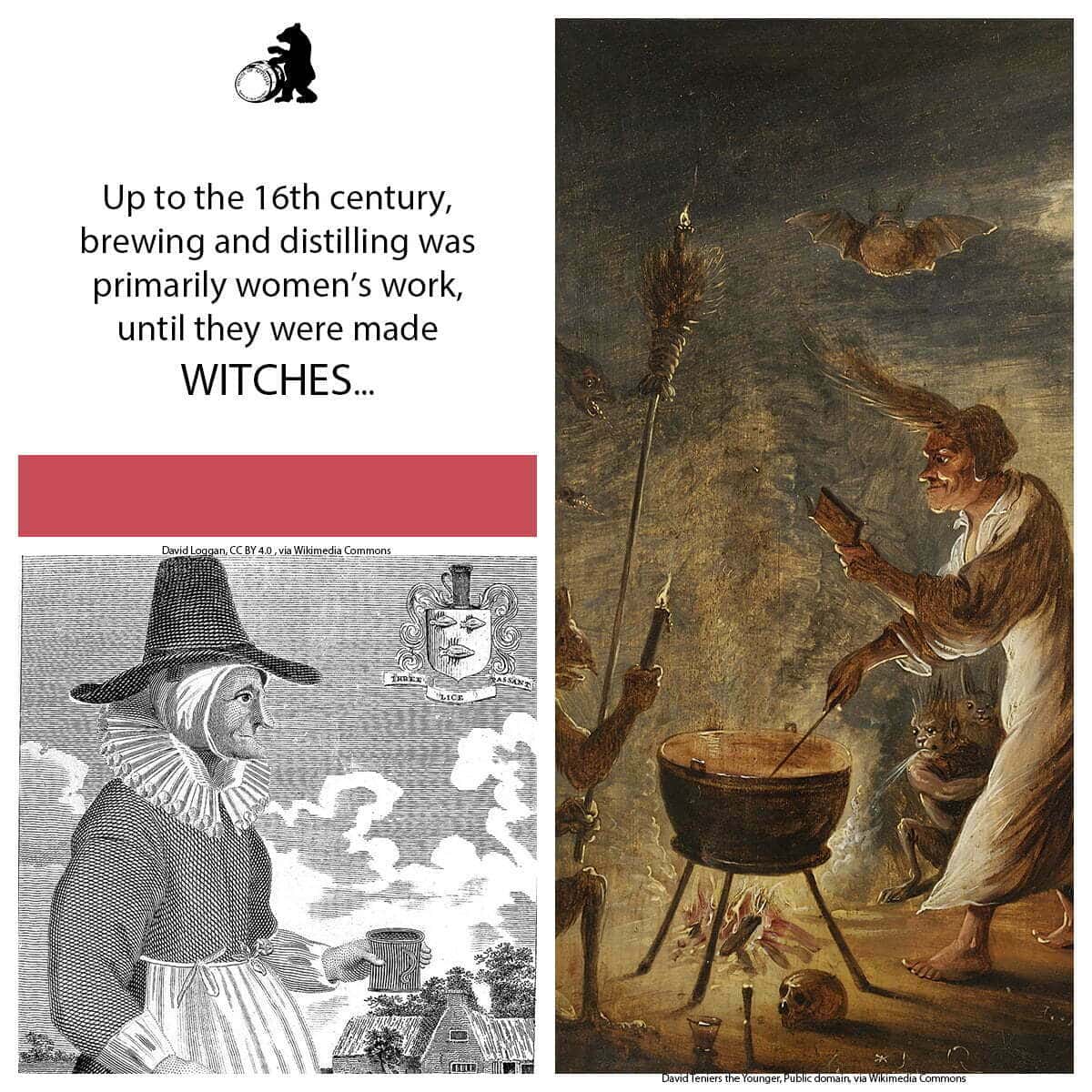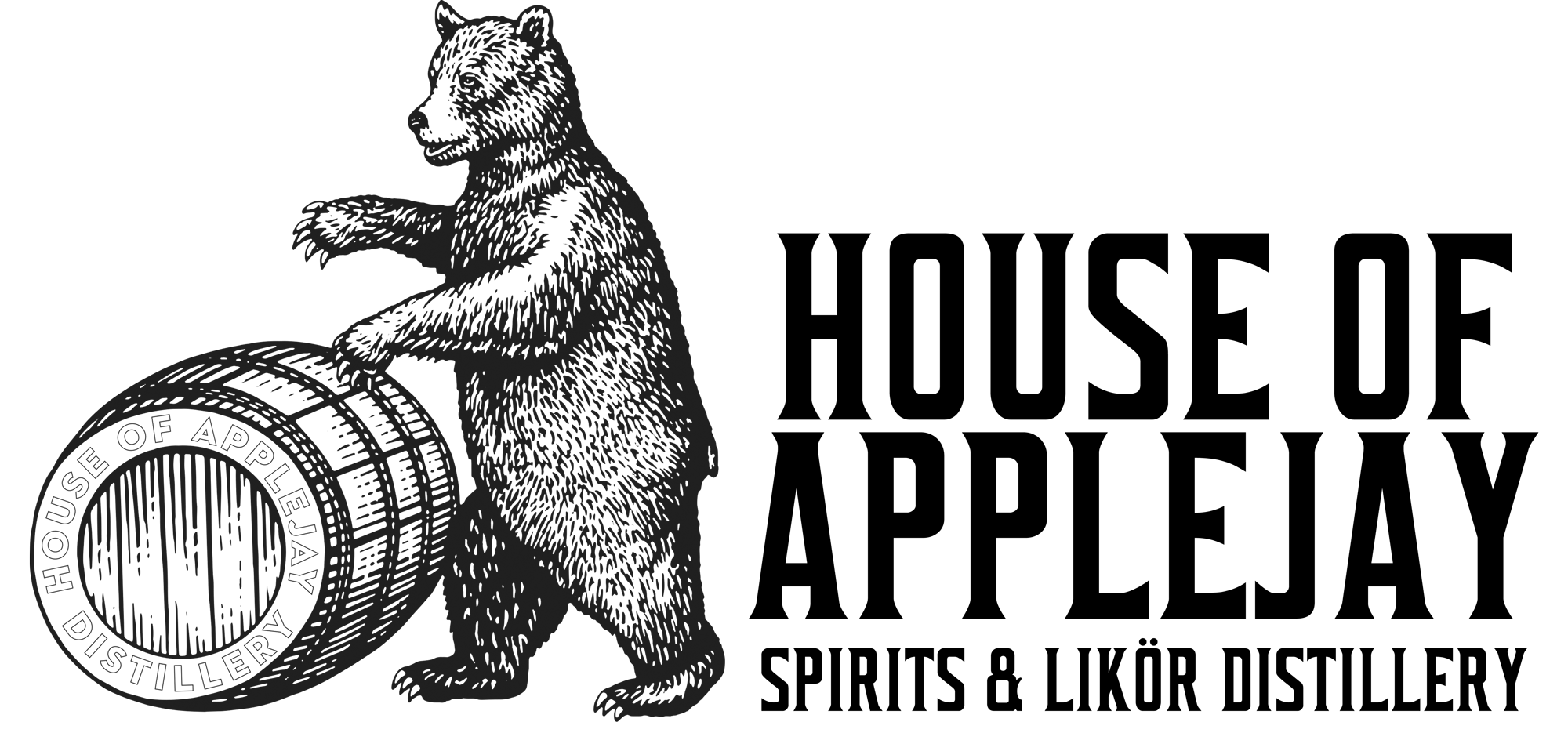Witches, Brewing, and Distilling

Brewing alcohol was part of a woman’s chores for thousands of years as it was closely associated with cooking and baking. From ancient Egypt up to the medieval times it was common that women were running breweries. The Finns believed their goddess Kalevatar brought the divine alcoholic drink to man. The Vikings only allowed women to brew beer. The Abbess Hildegard von Bingen (1098-1179) was the first to publicly recommend the use of hops in brewing and wrote a book about healing tinctures. In the Middle Ages, the brewing kettle was part of the dowry.
The so-called “alewives” were medieval female brewers that advertised their beer by wearing large black pointed hats on city markets to be sticking out of the crowd. They also used “ale stakes” (long sticks similar to a broom) hanging on their doors to let everyone know they had beer for sale. The term “alewife” is first recorded in England in 1393.
Since the 13th century Inquisition, was a successful instrument of the Roman Catholic Church to facilitate the fight against heretics, and other criminal offenses such as blasphemy and magic. With Reformation (1517-1555) Christian fundamentalism grew. This did not only mean that women were forced into stricter gender norms but also banned in England from brewing beer. When other guilds in central Europe started to exclude female brewers, women were driven out of business. Christian fundamentalists kept on accusing women that were brewers, or distillers of pharmaceutical tinctures and elixirs of witchcraft. This was eliminating almost all private competition for monasteries and nunneries. Witch persecution raised to its peak in Central Europe from 1550 to 1650 whereas seventy-five percent of all victims were females. Overall about 60,000 people in Europe died being accused of alleged witchcraft. In 1782, the last witch in Europe was executed in the Protestant Swiss canton of Glarus.
Today, the “alewives hat” and “ale stick” are symbols of witches, and only few remember it was an economic smear campaign against women that created them.

0 Comments